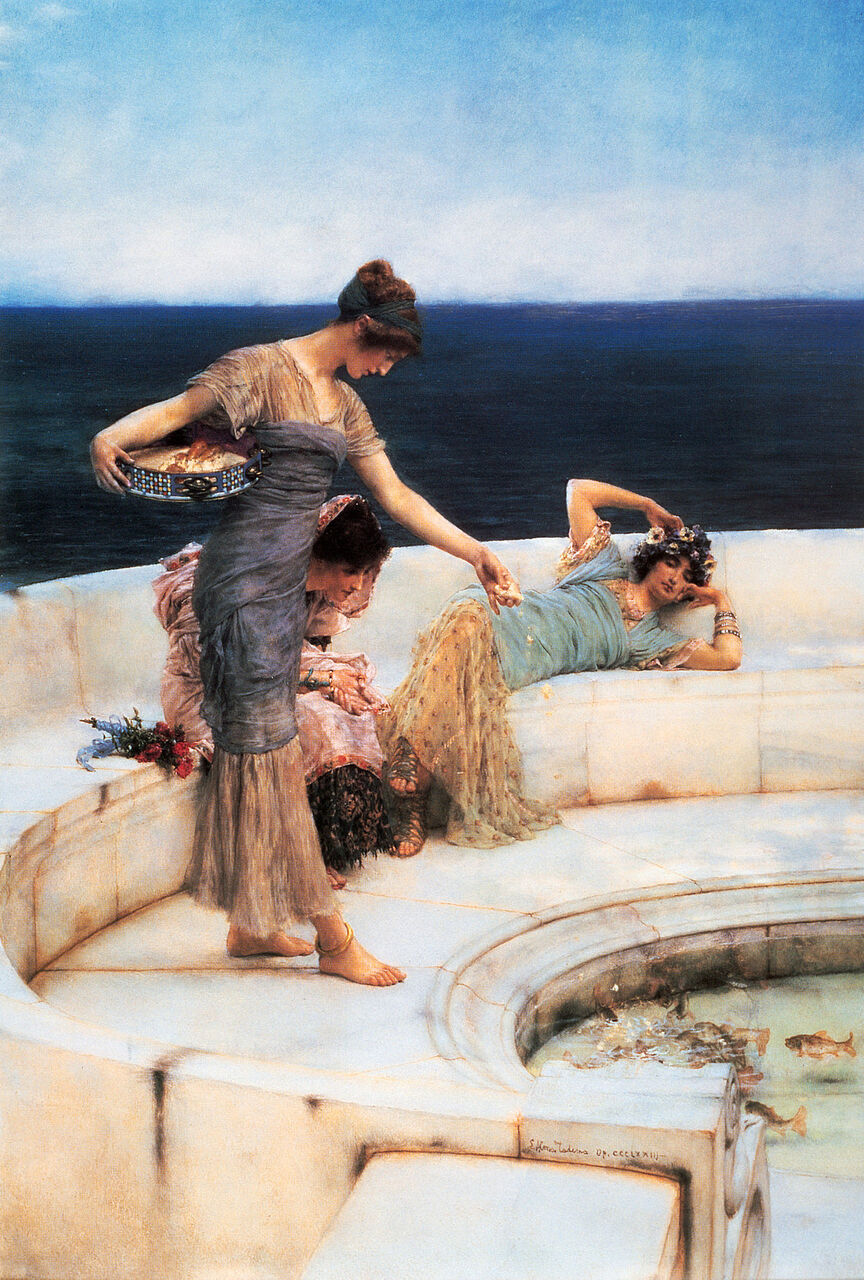
MARY COPELAND – VICTORIAN DETECTIVE: ALMA-TADEMA PART 3
As the previous two blogs showed, Lawrence Alma-Tadema was highly regarded during his lifetime. He sold his works for large sums. He once said that while painting he was an artist, but once the painting was done he became a businessman. That combination is not common among artists, but apparently he was able to combine it well. As the years went on, his health declined. He had a lot of trouble with his lungs. He produced fewer paintings, but that was not only due to his health, but also to the fact that in 1883 he moved to another house, at 34 Grove End Road, St. John’s Wood, in London. He turned it into a magnificent house, together with his wife Laurence. In fact, the house was a work of art in its own right, as was that of his fellow painter and friend Frederic Leighton, which I will devote a later blog to. In 1912 the house was sold and recommended as follows: “An unique residence with magnificent Byzantine studio and gallery. Nine or more bed rooms, billiard room, dining room, library, inner hall, palm house, Dutch Room, complete domestic offices, etc. The entire property is freehold and extended to about three-quarters of an acre. The house is set well back from the road, and seated amidst old world matured gardens; the whole property is in reality an artist’s treasure house, collected by one master mind.”
After 1880, Alma-Tadema exhibited and received many honours, such as the 1889 Medal of Honour at the 1889 World’s Fair in Paris, his election in 1890 as an honorary member of the Oxford University Dramatic Society, and the Great Gold Medal at the 1897 World’s Fair in Brussels. In 1889 he was knighted and went on through life as Sir Lawrence Alma-Tadema. He was only the eighth artist to come from the mainland to receive this honour. He participated in the preparation of the Paris World’s Fair in 1900 and also exhibited two of his works there, for which he was awarded the Grand Prix Diploma. Also in 1904 he participated in (and many of his works were present at) the World’s Fair in Saint Louis in the United States.
Alma-Tadema was versatile. For example, he was involved in the design and production of theatre. He also designed furniture. In addition to his painting, he also derived his inspiration for making furniture or the theatre from Roman and Egyptian subjects and objects. It was that he was getting older, but it has also been suggested that he was attracted to the new medium: the film. It would have been a small step from the theatre to the movie. Filmmakers from that time who wanted to film Classical Antiquity were often inspired by his paintings.
Towards the end of his life, Alma-Tadema painted less and less, but still painted large works, such as Silver Favourites from 1903 and The finding of Moses from 1904, pictured here. Laura, Alma-Tadema’s wife, died on August 15, 1909. This shocked him so much that he would only survive her for a few years. During a cure at the Kaiserhof Spa in Wiesbaden (Germany), accompanied by his daughter Anna, he died on June 28, 1912 at the age of seventy-six, presumably of stomach problems.
Alma-Tadema was given the great honour of being buried in a crypt of St Paul’s Cathedral in London. Many dignitaries from England, but also from the Netherlands, attended the service. There were also representatives of the British royal family.
In one of the next blogs I will talk about the loss of interest for his work, but also about the influence of Alma-Tadema and his resurrection as one of the most important representatives of painting in nineteenth century England. His works are now again sold for exorbitant amounts.
With kind regards,
Robbert Jan.
Accompanying paintings:
Silver favourites from 1903
The finding of Moses from 1904

Post Views : 297